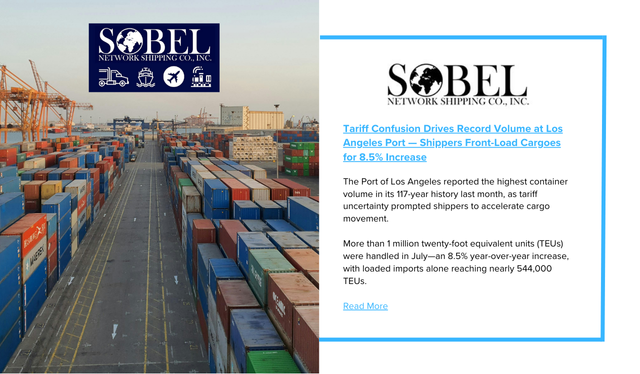The Port of Los Angeles reported the highest container volume in its 117-year history last month, as tariff uncertainty prompted shippers to accelerate cargo movement.
More than 1 million twenty-foot equivalent units (TEUs) were handled in July—an 8.5% year-over-year increase, with loaded imports alone reaching nearly 544,000 TEUs. Compared to June, overall container activity rose by 14.2%, underscoring the rush to get goods through U.S. ports before new duties take effect.
The surge reflects shippers front-loading cargo in anticipation of tariff hikes, a strategy that has become common amid unpredictable trade policy changes. Shipping schedules from China’s east coast to U.S. west coast ports—typically three to four weeks—added urgency as companies raced to secure inventory for U.S. markets.
Industry data shows the number of dry-cargo vessels making trans-Pacific voyages reached year-to-date highs between late June and mid-July, highlighting the scale of this accelerated shipping activity.
While the short-term spike demonstrates the impact of front-loading, port officials caution that volatility is likely to continue as global trade patterns remain unsettled. With tariff deadlines shifting and trade negotiations ongoing, the shipping industry faces ongoing cycles of sudden demand surges followed by potential slowdowns.


